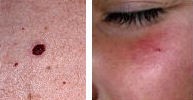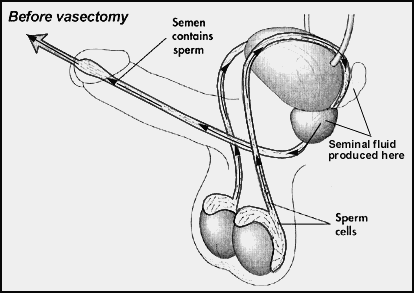MINOR SURGERY & VASECTOMY
Treatment is available for the following:
* Skin Tags
* Moles
* Cysts
* Lipoma
* Warts
* Cherry spots (Campbell de Morgan spots) and Spider Naevi (dilated blood vessels).
* Ingrown Toenails
How our minor surgery procedures are performed ?
All procedures are carried out under local anaesthetic. Most skin lesions are benign and can be removed by cautery, curettage or excision. However lesions that are excised (cut out) are sent for histology (laboratory analysis) to exclude malignancy.
To make an appointment for initial advice and assessment just telephone 01512902610.
At this appointment the doctor will examine you, take a medical history and explain the various options. Generally a further appointment a few weeks later would be made for the surgery although sometimes it is possible to proceed at the same time as the first appointment.
Skin Tags
These are extremely common especially around the neck and armpits. They may be numerous and unsightly and can rub and cause soreness. Most can be quickly and safely removed by electrocautery although larger lesions may need formal excision.
Moles
Most people have moles which are invariably benign and not troublesome. Sometimes they cause problems and you may prefer to have them removed even though they are not cancerous. We can advise you regarding the different ways to treat these moles and give you advice regarding mole care and how to recognise suspicious changes that should be brought to the attention of your doctor.
Cysts
Cysts usually result from a blocked gland in the skin causing a small rounded lump to develop and get slowly bigger. They are mostly benign.There is however a risk that they can discharge smelly material or become infected and cause an abscess. They often occur on the head, neck and upper chest and back.
Lipomas (fatty lumps)
Lipomas are fatty growths that commonly occur around the body and are usually localised, discreet soft lumps. Again they are mostly benign although some can cause discomfort and are tender if knocked. They slowly enlarge and can become prominent causing embarrassment especially if they are on the arms, legs or shoulders.
Warts
Adults can still suffer from warts of one sort or another. They are invariably benign and can be large, pigmented and unsightly (especially the seborrheic warts). They often occur on the face, neck and upper body and can be easily treated.
Cherry spots (Campbell de Morgan spots) and Spider Naevi (dilated blood vessels).
These are small bright red spots, sometimes slightly raised and often develop on the trunk or face respectively, but can occur anywhere. They are small abnormalities of the tiny blood vessels in the skin. We can offer fast, simple and effective treatment.
Ingrowing Toenails
These are especially common in the young and older age groups. We can also advise regarding this procedure and additionally complete or partial nail ablation where the nail bed is destroyed permanently to stop the troublesome nail growing back again.
VASECTOMY
Longview Surgical Care Services offer you the latest and more advanced technique by performing a no-scalpel vasectomy. This procedure does not use a scalpel to make a cut in each side of the scrotum. Instead only one small keyhole is made under local anaesthetic in the mid-line and the vas from each side are lifted through this. About 2cms of the vas is destroyed using an instrument called a hyfrecator (this is a microwave which desiccates the vas) and the vas is divided,the ends then placed back into the scrotum.
This scalpel-free method is an advanced technique, not yet widely available (most hospitals tend to use the old scalpel technique). The advantages of the no-scalpel vasectomy compared with the traditional scalpel method are:
* Less pain
* No stitches
* Less damage to the tissues
* Shorter operating time
* Faster recovery
* Reduced complications like bleeding & haematoma formation (clot in the scrotum)
* Reduced risk of infection
What happens during a vasectomy?
The vas is the medical name for the tube along which the sperm travel from the testes to the penis. During vasectomy procedure 2cms of the vas is destroyed using an instrument called a hyfrecator (this is a microwave which desiccates the vas) and the vas is divided. This prevents the sperm from joining the semen at ejaculation. The operation can be carried out under local anaesthetic and this is obviously a safer way of doing it. There is a small amount of discomfort for a matter of seconds while the anaesthetic is infiltrated into the skin of the scrotum (it feels similar to having local anaesthetic prior to having a tooth filled). In fact the discomfort associated with a vasectomy may be compared to having a tooth filled, both in terms of the procedure, the anaesthetic and the post-op discomfort. Rarely if the vas are difficult to feel, may not be possible to do the operation under local anaesthetic and a general anaesthetic would be required, this will be decided during assessment prior to the procedure.
How effective is a vasectomy?
Vasectomy must be considered a permanent form of contraception. It remains the most effective form of male contraception, however, there is a very small failure rate where the two ends of the tube grow together again. This happens in about 1-2 in 1000 cases in the first four months and 1 in 5000 in the first 3 to 4 years.
Will a vasectomy affect my ability to have sex?
The operation does not affect the ability of the man to perform sexual intercourse and does not affect sexual drive in any way. Seminal fluid will continue to be ejaculated when a man reaches a climax but it will not contain sperm. The testicles continue to produce the hormone, testosterone, which is responsible for masculine qualities. In other words, the operation does not affect a man's sexuality.
Before Vasecotmy
The sperms which are produced in the testes are transported by a pair of tubes called the vas deferens. The idea of the operation is to cut the tubes which blocks their flow into the semen. The sperms are still produced in the testes but they do not enter the semen.
After No Scalpel Vasectomy
Before the Operation:
Please ensure that the scrotum ("the bag" holding the testes) is free of hair. It may mean having to shave the scrotum (below the penis). You can use a safety razor to clip the hair. It helps to reduce the incidence of infection and makes the operation technically convenient. Please do this a day before or on the day of the operation.
Also bring a pair of tight-fitting underpants, if available, to wear after the operation. Postoperatively, it provides extra support.
What happens after the operation?
1. Some minimal bruising and discomfort may be expected during the first 1-3 days and this may resolve without treatment, although it is usual to take something for this discomfort such as Paracetamol or Ibuprofen. The small puncture wound on your scrotum is likely to ooze a little for the first few days and then scab over. Some times a drop or two of blood might stain the first couple of ejaculations after the procedure which is due to congestion at the cut end of the tube.
2. After the operation, the remainder of the day should be spent resting, as well as the following 2 days. We advise you to wear tight fitting underpants to support your scrotum day and night for 1 week. It is important to avoid heavy lifting, heavy physical work, vigorous exercise, sport and intercourse for at least one week. Depending on the patient's occupation, it may be necessary to take up to one week off work. This is not a reflection on the severity of the operation, rather that the scrotum is very mobile and subject to friction and needs rest to allow all tissues to seal and heal. REST IS IMPORTANT FOR THE FIRST 24-48 HOURS. IF THIS ADVICE IS IGNORED COMPLICATIONS SUCH AS BLEEDING, INFECTION, PAIN AND SWELLING ARE MORE COMMON.
When will a vasectomy be effective?
It is essential that the couple must use other forms of contraception following the vasectomy operation until the man has had two samples of semen examined to make sure that there are no sperm present. It is advised to have a minimum of 25-30 ejaculations before sending these samples to the laboratory at the proposed date of 12 and 16 weeks after the operation. In a small number of cases these will not be fully clear and the tests will have to be repeated. Very occasionally the semen may be very slow to clear and sperm can be present more than a year after the operation. You can only rely on a vasectomy for contraception after you have had two clear semen tests (no sperm present).
What are the possible complications?
1. Surgical wound infections (0.2%) occur from time to time and the puncture wound may be slow to heal. This may need to be re-checked by the doctor in case it requires antibiotic.
2. Scrotal haematoma (blood clot) occurs in about (0.2%) of cases. Some bleeding into the tissues around the testicle causes it and gives rise to pain and swelling. This is commonest during the first 2-3 days, is likely to occur if stipulation regarding rest is not observed and could take few weeks to resolve.
3. Epididymitis or Epididymo/Orchitis occurs in about 0.5% and is a condition in which part or the entire testicle becomes inflamed. This can occur following a vasectomy. It can also occur in men who have not had a vasectomy. It is rare and usually responds well to treatment.
4. Sperm Granuloma may occur in up to 0.8% of vasectomy cases. These are small lumps, which form at the end of the vas, particularly on the side still carrying sperm. These are harmless and usually do not cause any problems but if they become tender or painful it may be necessary to remove them surgically. This procedure can be done under local anaesthetic.
5. Vary rarely men suffer from persistent pain in the testicle or at the vasectomy site which does not have an obvious cause and occur 0.1%. Treatment of this condition is some time difficult, in some of the cases it subsides with time and on rare occasion might require reversal of the procedure.
Should you have any further question to ask, please contact your doctor at your surgery, or Dr. M. Alexander can be contacted via Longview Surgical Care Services on 0151 290 4610/4611.


Copyright © Longview Medical Centre. All rights reserved. 2004-.








LONGVIEW SURGICAL CARE SERVICES
Longview Drive Primary Care, Huyton, Liverpool, L36 6EB
Tel: 0151 290 4610 Fax: 0151 480 1133

